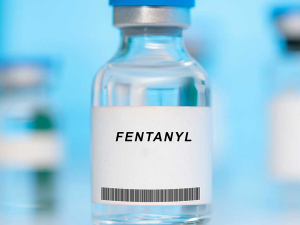Tramadol has often been considered more harmless than other painkillers because it is a less potent narcotic. However, because of its chemical composition, it acts more strongly when taken orally compared to intravenous administration methods. Even though Tramadol is primarily prescribed to users as an analgesic, it may also enable them to take alarmingly high doses and remain high-functioning due to its stimulatory effects making for a deadly combination. Tramadol is typically categorized as an oral, centrally-acting pain killer containing an opioid, ideally making the drug a narcotic. Some familiar names of drugs also falling under the narcotics tag include codeine and oxycodone. The increasing issue of opioid addiction within the United States has also resulted in opioids making news headlines over recent years. Tramadol was approved as a non-controlled pain killer by the United States Food and Drug Administration in 1995. However, since then, Tramadol’s substance status has been subject to changes due to criminal diversion, misuse, and drug abuse reports.
Legal Tramadol Use in Sports
 Tramadol is frequently being used in sports. Due to growing concerns regarding painkillers’ abuse, the World Anti-Doping Agency (WADA) has been called upon to ban Tramadol use and add it to its list of prohibited substances like some stimulants, steroids, and amphetamines. However, Tramadol is presently on WADA’s list of monitored substances and medications such as codeine, caffeine, and nicotine.
Tramadol is frequently being used in sports. Due to growing concerns regarding painkillers’ abuse, the World Anti-Doping Agency (WADA) has been called upon to ban Tramadol use and add it to its list of prohibited substances like some stimulants, steroids, and amphetamines. However, Tramadol is presently on WADA’s list of monitored substances and medications such as codeine, caffeine, and nicotine.
As dangerously potent as Tramadol is, it is still legal to use the drug in sport. Multiple sports organizations, such as the United States Anti-Doping Agency (USADA), see a need for the World Anti-Doping Agency to shift Tramadol to the Prohibited List, with other banned narcotics, from its position in the Monitoring Program. Even though athletes in multiple sports are abusing Tramadol, WADA is yet to add the drug to the Prohibited list as of 2015. Evidence from the WADA Monitoring Program indicated that between 2012 and 2015, up to 82 percent of Tramadol use happened in cycling. This raises the question of how authorities can regulate Tramadol in sports considering its abuse potential in addition to its medical use.
Tramadol Abuse Effects in Various Global Regions
 There have been reports of high numbers of vehicle accidents, particularly in cities with excessive Tramadol abuse levels. Hospitals in Garoua, Cameroon, can link up to 80 percent of all the victims of car accidents to Tramadol, which implies that more than half of the city’s adults use the drug. Additionally, hospital staff in the city have reported that it is common for people outside the hospital standing by for patients to start convulsing, which is one of the indications of an overdose of Tramadol. This also shows how drastic the tramadol addiction situation in the city has become.
There have been reports of high numbers of vehicle accidents, particularly in cities with excessive Tramadol abuse levels. Hospitals in Garoua, Cameroon, can link up to 80 percent of all the victims of car accidents to Tramadol, which implies that more than half of the city’s adults use the drug. Additionally, hospital staff in the city have reported that it is common for people outside the hospital standing by for patients to start convulsing, which is one of the indications of an overdose of Tramadol. This also shows how drastic the tramadol addiction situation in the city has become.
In the 90s, Tramadol was first brought into the US market, and it was at this time, addiction became a fast-rising problem spreading to most of Africa, China, and the Far East. There is also a specific Tramadol problem in Egypt. Being a Schedule IV controlled drug within the United States and a prescription medication in the United Kingdom, it is still regarded as a controlled substance in Egypt, as is the case with any opioid such as codeine. This means that anyone who brings Tramadol (particularly large amounts of it) into the country without any permission will be in deep trouble. The Egyptian government has given harsh penalties and even the death penalty to people caught in possession of Tramadol in significant quantities. Regardless of these stiff measures, Tramadol is still more popular and misused than ever in the country. Aside from recreational use, many people, particularly those falling in the poor working-class, take the drug to get more energized so they can take up multiple jobs by working for longer periods.
Tramadol has also posed a crucial problem, especially in places like Gaza, where there is an illegal drug trade resulting from increased addiction levels. People have frequently been smuggling in Tramadol via underground tunnels causing the authorities to be especially strict.
Evidence shows that there has been increased Tramadol trafficking to West and North Africa given the recent seizure of large quantities of the drug in this region. In 2011, Egyptian Authorities took in approximately 120 million tablets with Tramadol and roughly 320 million tablets in 2012. These preparations were illegally brought into Egypt, primarily from India and China.
Tramadol Substance Categorization and Legal Status in Various Regions
 Tramadol is categorized as a Class C drug making it illegal to sell, give away, or have yourself. The drug is only available to users with a prescription from a qualified healthcare professional. Possession of such a drug can either land you an unlimited fine or two years in prison, if not both. Supplying the drug to other people, even close friends can make you eligible for an unlimited fine, 14 years in jail, or both.
Tramadol is categorized as a Class C drug making it illegal to sell, give away, or have yourself. The drug is only available to users with a prescription from a qualified healthcare professional. Possession of such a drug can either land you an unlimited fine or two years in prison, if not both. Supplying the drug to other people, even close friends can make you eligible for an unlimited fine, 14 years in jail, or both.
The drug is not under international control presently, but Tramadol’s legal status is different in various regions globally. However, it is regarded as a prescription-only medication in most countries. Currently, the United States Drug Enforcement Administration has classified Tramadol as a controlled Schedule IV substance in all 50 states in the United States. This new scheduling will be applied to the drug in any form. One can now only refill their Tramadol prescriptions a maximum of five times after the first prescription date within six months in the US. After this period or after the five refills, the user will need a new prescription for Tramadol. This law is the same for all Schedule III and IV substances.
The drug has been under national control in Saudi Arabia, Bahrein, Jordan, Mauritius, Egypt, Australia, Ukraine, Iran, Venezuela, and Sweden. Tramadol was listed in China as a second category psychoactive substance by the Food and Drug Administration in 2007. The Advisory Council on Misuse of Drugs (ACMD) advised for the control of Tramadol as a Class C substance under the UK’s 1971 Misuse of Drugs Act in February 2013.



